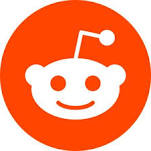How I Built A $280M Crypto Investment Platform
Note: This business is no longer running. It was started in 2018 and ended in 2023. Reason for closure: Acquired.
Hello! Who are you and what business did you start?
My name is Iakov Levin, and I am the Founder and CEO of Midas.Investments, a digital assets investment platform featuring structured passive-income products.
Our target audience is people who have discovered cryptocurrency and want to use it to build an additional long-term source of income — but are not ready to spend a lot of time and risk capital on it yet.
Seeing the demand for this kind of product, we first came up with the idea of our platform. It helps transparently manage investor capital by offering a wide array of innovative digital asset products (e.g., DeFi), providing yield for their stability, and covering the basic financial needs of our clients. This is what Midas is about: bridging the gap between a common user and new financial technologies.
What's your backstory and how did you come up with the idea?
The first thing that shaped what I am doing now is that my family was rather poor as I grew up. I remember that nagging feeling: I didn't want to live like my parents, who worked 12 hours a day, fatigued with endless attempts to survive. I...

Download the report and join our email newsletter packed with business ideas and money-making opportunities, backed by real-life case studies.

Download the report and join our email newsletter packed with business ideas and money-making opportunities, backed by real-life case studies.

Download the report and join our email newsletter packed with business ideas and money-making opportunities, backed by real-life case studies.

Download the report and join our email newsletter packed with business ideas and money-making opportunities, backed by real-life case studies.

Download the report and join our email newsletter packed with business ideas and money-making opportunities, backed by real-life case studies.

Download the report and join our email newsletter packed with business ideas and money-making opportunities, backed by real-life case studies.

Download the report and join our email newsletter packed with business ideas and money-making opportunities, backed by real-life case studies.

Download the report and join our email newsletter packed with business ideas and money-making opportunities, backed by real-life case studies.















